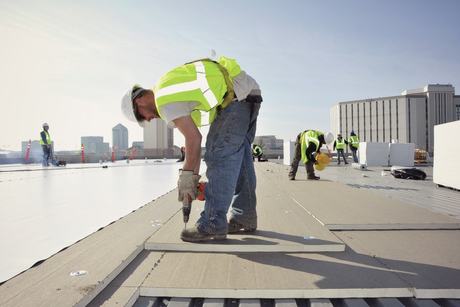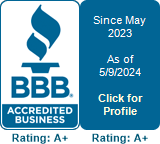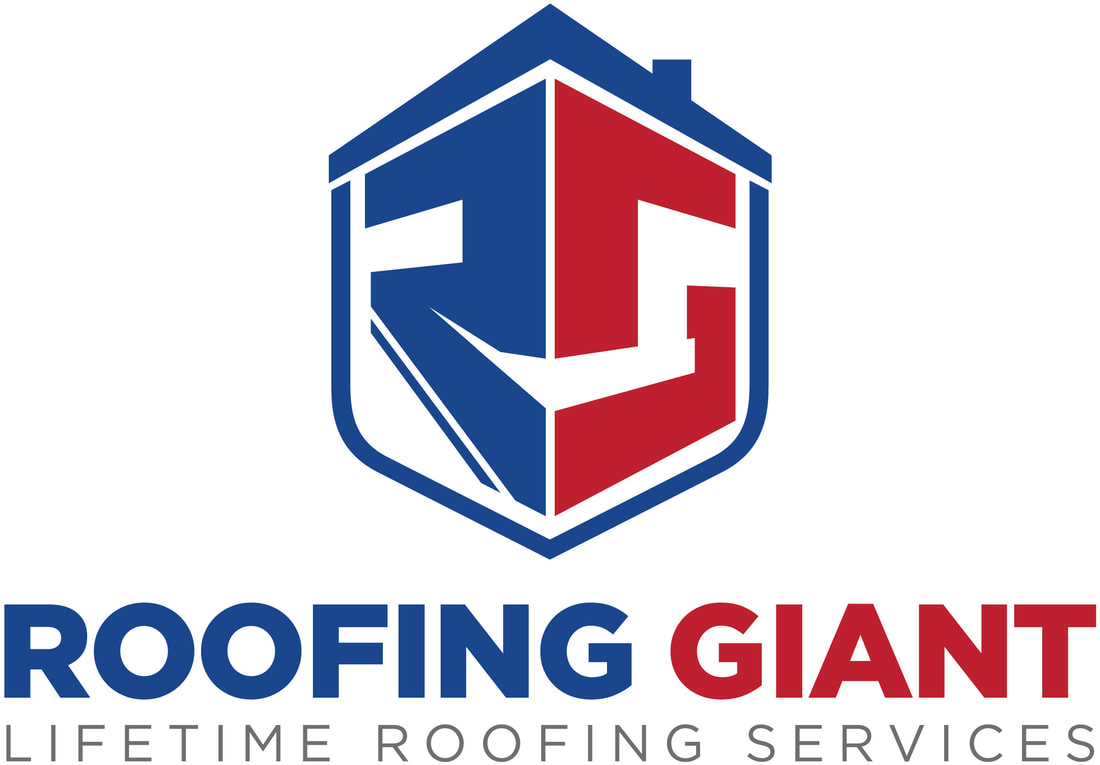 There are several different types of roofing systems that commercial contractors have to choose from. Roofing options such as asphalt, spray-on, built-up, and tar and gravel are increasingly being replaced by single-ply roofs. There are many factors to take into consideration when selecting the best kind of roof to install. A few of these considerations include budget constraints, the construction of the overall building, the climate in the area, if there is currently a roofing system in place, and building code requirements. Once a contractor has used a particular type of roofing system, there are often other factors that will determine if he or she will continue to use that specific system. The primary factors include the ease of installation, durability, longevity, maintenance demands, and energy efficiency. The following information details what a single-ply roofing system consists of and the different types and variations of single-ply. What's involved in the installation process, the benefits, energy efficiency, environmental aspects, and the cost are also evaluated. Each of these areas provides specific information regarding why roofing companies are increasingly providing single-ply roofing systems for their customers. What Exactly Is a Single-Ply Roofing System?
Single-ply roofs are membranes that are made of compounded synthetic materials that are flexible. These roofing membranes are made in sheets according to strict quality-control requirements. The consistency and quality of the product is one of the reasons contractors are increasingly choosing single-ply roofing. These roofs are known not only to be flexible but strong and durable. The Single Ply Roofing Industry divides these products into the following categories.
Single-ply sheets normally range in width from 6 to 18 feet. The membrane size that is most often used is around 10 feet. The average thickness of each of these sheets is usually between 45 and 90 mils. It's normally recommended to install a membrane that measures at least 50 mils. Finally, it should be noted that each of these types of single-ply membranes are very different. EPDM, PVC, and the TPOs have different durability specifications, formulations, and costs. What Is Involved in the Installation Process? There are different methods for installing single-ply sheets. They are normally installed as either mechanically attached systems or as fully adhered systems. They are sometimes installed using a method that is referred to as "ballasted."
What Is the Longevity and Durability of Various Single-Ply Systems? TPOs, PVCs, and EPDMs are lightweight because they consist of a single layer of roofing over the insulation. This makes them the ideal choice when doing retrofits. TPOs come in varying thicknesses as well as a variety of roll widths. This makes them convenient and adaptable to most every roofing need. How long TPOs last varies, often depending on the membrane's formulation. It's estimated that these types of roofs will last anywhere from 7 to 20 years. It should be noted that TPO roofing systems are continuously under development by a variety of manufacturers. This is done to achieve the best performance for the lowest cost. It also means that a TPO roof from a particular manufacturer will not be the same as one produced a few years earlier. This needs to be taken into consideration when making repairs or ordering materials. A PVC system is able to provide resistance to a variety of chemicals as well as resistance to tears and punctures. This type of roofing is often recommended for buildings that are exposed to high levels of oil, grease and different kinds of fuels. These systems are also used in areas where acid rain is a problem. PVC membranes are generally considered to be the longest lasting of all the single-ply roofing options. Most manufacturers will offer a 20- or 25-year warranty for these types of roofs. However, they will often last much longer. EPDM roofing systems can withstand a wide range of temperature extremes, making them ideal for areas of the country that have harsh winters as well as hot summers. They are resistant to ultraviolet radiation. This type of roof can contract and expand with the building. EPDM roofs will typically last about 10 to 15 years. The technology used in EPDM roofing has proved effective for at least 30 years. Modified bitumen and tar-and-gravel roofs can last approximately 10 to 20 years, but they are very expensive to remove. This is another reason why single-ply is increasingly becoming the first choice for roofing contractors. Overall, most single-ply roofs will last longer if they are thicker. How Difficult Is the Maintenance of Single-Ply Roofing? During the start of their service lives, most types of single-ply roofing systems that have been correctly installed should not need much maintenance. The seams in an EPDM, which are treated with adhesives, are more vulnerable to coming apart than those in a TPO. The seams in a TPO are hot-air welded, making them stronger. In the long run, an EPDM roof will likely need more maintenance. TPO membranes, though, are not easy to weld new materials to when maintenance is needed. These aspects must all be taken into consideration when choosing which single-ply roofing system is the best to use for each job. When it comes to keeping time and costs spent on maintenance to a minimum, it's important to make sure any roofing system has been installed properly in the first place. Contractors need to make sure that the proper number of fasteners have been used during the mechanical installation process. Membranes could blow off, contributing to increased maintenance and repair difficulties. It's also important to include regular inspections as part of roof maintenance. Correct installation and keeping current on inspections are two of the most important aspects of maintaining the roofing system. Are These Types of Roofs Energy-Efficient? Both TPO and PVC roofing systems are considered to be energy-efficient. Both types of roofing reflect approximately 90 percent of the heat back into the atmosphere. This can mean a large amount of savings on energy bills. TPO and PVC roofs that are darker colored are still formulated with light reflective properties. As the demand increases for heat reflective roofing systems, single-ply roofing will continue to be the roofing system of choice for many commercial contractors. Certain types of PVC roofing membranes have been recognized by the U.S. Department of Energy and the ENERGY STAR Roof Products Program for their energy-saving capabilities. While PVCs are good at reflecting solar heat, some companies manufacture PVC roofs that reflect more than 80 percent of the solar heat. Asphalt/built-up roofs usually reflect only 25 percent or less of solar heat. PVC membranes can also improve the overall performance of the underlying insulation. This will further reduce heating and cooling costs. Are Single-Ply Roofs Environmentally Friendly? TPO and PVC roofing can provide high reflectivity without any additional coating applied. This will keep buildings cooler and therefore reduce energy costs. TPOs are generally considered to be the best overall from an environmental standpoint. These sheets produce no chlorine or dioxins. TPOs are also naturally heat- and UV-resistant. There have been studies conducted by the National Aeronautics and Space Administration that suggest that air temperatures could be reduced in urban areas by using light-colored roofing membranes. This in turn can reduce smog and improve air quality. Both TPO and PVC membranes are used due to their cooling properties. EPDM membranes, while not offering the same type of reflective properties that are found in TPOs and PVCs, do offer some reflective properties. Both PVC and TPO roofing membranes are 100 percent recyclable. It's also possible to install a new PVC membrane over an old roof. This would not only save on costs but would save on landfill space. EPDM roofs that are produced from petroleum-based by-products can't be recycled. Some manufacturers do make their products from recycled rubber. Single-ply roofing can also help conserve resources by reducing the use of wood and steel that is used in the roofing process. How Much Does Single-Ply Roofing Cost? Flat roofs normally cost less than sloped or pitched roofs. EPDM is the least expensive of the single-ply roofing systems. EPDM rubber costs approximately $1.50 per square foot. This does not include insulation. TPO roofing without insulation is about $1.70 per square foot. Purchasing PVC roofing will cost about $1.90 per square foot without insulation. When considering the total costs, including installation, the following are general estimates.
Choosing the Best Single-Ply System The combination of cost, durability, relatively easy installation, and energy efficiency has made single-ply roofing membranes the most popular roofing systems for both residential and commercial construction. While deciding what type of roofing system to use is dependent upon several factors, commercial roofing contractors are increasingly seeing the benefits of using a single-ply system. The decision then becomes not whether to use a single-ply roofing system, but which type. Considering that there are different types of single-ply systems, each with various benefits, contractors can usually find one system that best meets the needs of the building they're currently working on. When searching for a roofing company that provides commercial roofing or industrial roofing in the Dallas area, consider that Roofing Giant, Inc. is a certified, fully insured company with more than 25 years of experience, and it can provide quality roofing. Whether you need a roof inspection, an area repaired, or a brand-new roof, Roofing Giant will offer outstanding service. Roofing Giant can be contacted at www.roofinggiant.com.
Comments
|
Roofing GiantDallas Roofing Company Archives
May 2020
Categories
All
Author |
|
Mailing Address: 2770 Main St., Ste. 168, Frisco, TX 75034
Dallas Location: 2730 N Stemmons Fwy #415, Dallas, TX 75207 |
Copyright 2018 © Roofing Giant ® All rights reserved. Roofing Giant ® is a registered trademark and is the property of Construction Giant, Inc. Do not use our trademark without a written permission from Construction Giant, Inc.
By Roofing Giant | Dallas Roofing Company | Dallas Roofing Contractor | Dallas Roofer | Privacy Policy | Terms of Use |
By Roofing Giant | Dallas Roofing Company | Dallas Roofing Contractor | Dallas Roofer | Privacy Policy | Terms of Use |

 RSS Feed
RSS Feed




